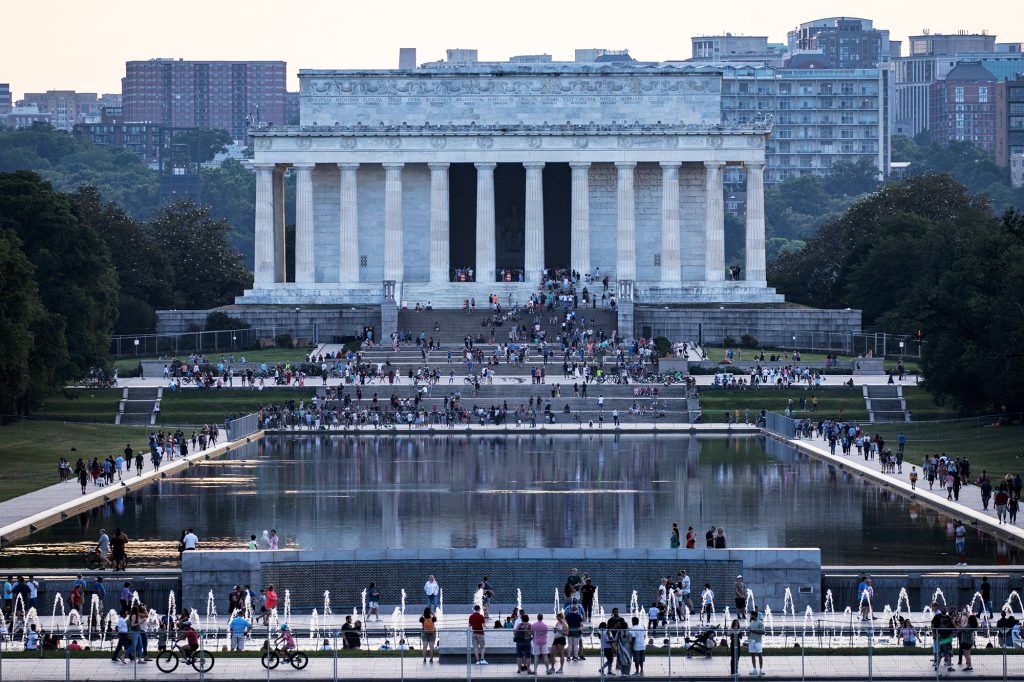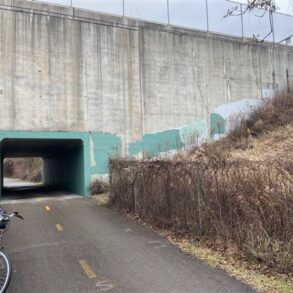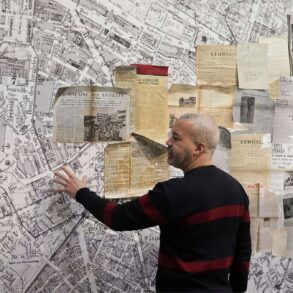An artist’s sketch of a woman hidden on concrete walls deep in the undercroft, or basement, of the Lincoln Memorial for over a century may be graffiti of the early film star Theda Bara, a National Park Service spokesman theorized in a recent article.
Mike Litterst, chief of communication for the National Mall and Memorial Parks, told the Washington Post that there’s a “compelling” but “circumstantial” case the graffiti is of Bara. Artnet reached out to the NPS for more information but did not hear back by press time.
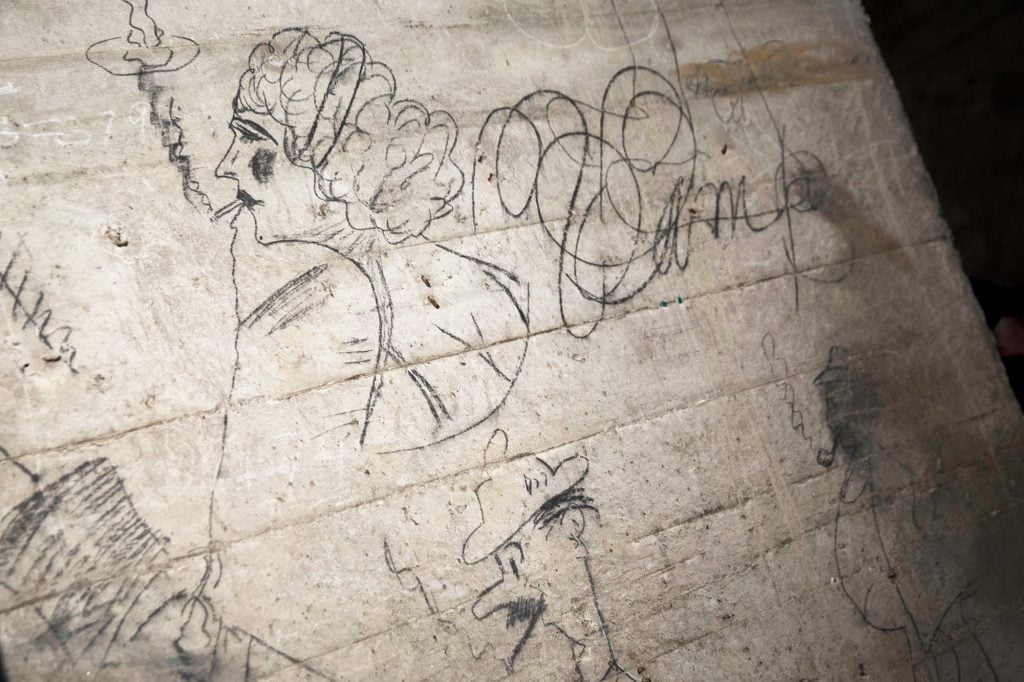
Graffiti adorns a wall in the “undercroft” of the Lincoln Memorial in Washington, D.C. Photo: Drew Angerer/Getty Images
The graffiti, as described by the Washington Post, was likely done in carpenter’s pencil and depicts a woman with dark lipstick and makeup smoking a cigarette, accompanied by the slang word “vamp” in an ornate script.
The origin of the word can be traced to Rudyard Kipling’s 1897 poem “The Vampire,” which depicted a woman who ruins a man emotionally and financially. Bara starred in A Fool There Was, a 1915 silent film based on a play inspired by Kipling’s poem. It was her breakout role and popularized Hollywood’s archetype of the femme fatale.
Litterst told the newspaper he heard the theory several years ago from a former NPS volunteer but that the agency has been working to transform part of that undercroft into a visitors center for the memorial, and so he brought up the theory again on a recent tour.
The graffiti was first found in 1984 by Stephen Potter and Robert Sonderman, two former archaeologists for the NPS, on a survey of the undercroft. At the time, authorities allowed special tours to view stalactites that formed under the memorial’s steps. But artifacts left behind by the memorial’s builders started going missing.
Potter and Sonderman were tasked with documenting and collecting the artifacts left behind like old work boots and liquor bottles, while also photographing graffiti scrawled throughout the undercroft.
“I couldn’t help but start noticing all this graffiti,” Potter told the Washington Post. “Particularly some that was extremely well executed.”
Some of the graffiti may have been done by various workers, but Potter believes the best of them, including the purported sketch of Bara, were done by a man who signed his name “Bosco Johnny” on a nearby pillar. The other drawings include sketches of the cartoon characters Mutt and Jeff, and possibly a portrait of then-President Woodrow Wilson.
Though Bosco Johnny’s identity is not known, the archaeologists believe he might have been a worker who tagged the undercroft’s walls before the memorial was dedicated in 1922.
“Again, all circumstantial, but I’d make the case that some lovesick laborer working on the Lincoln Memorial goes to the movies and sees ‘The Vamp,’ then in a quiet moment in the undercroft the next day draws a picture of her and labels it accordingly,” Litterst said.
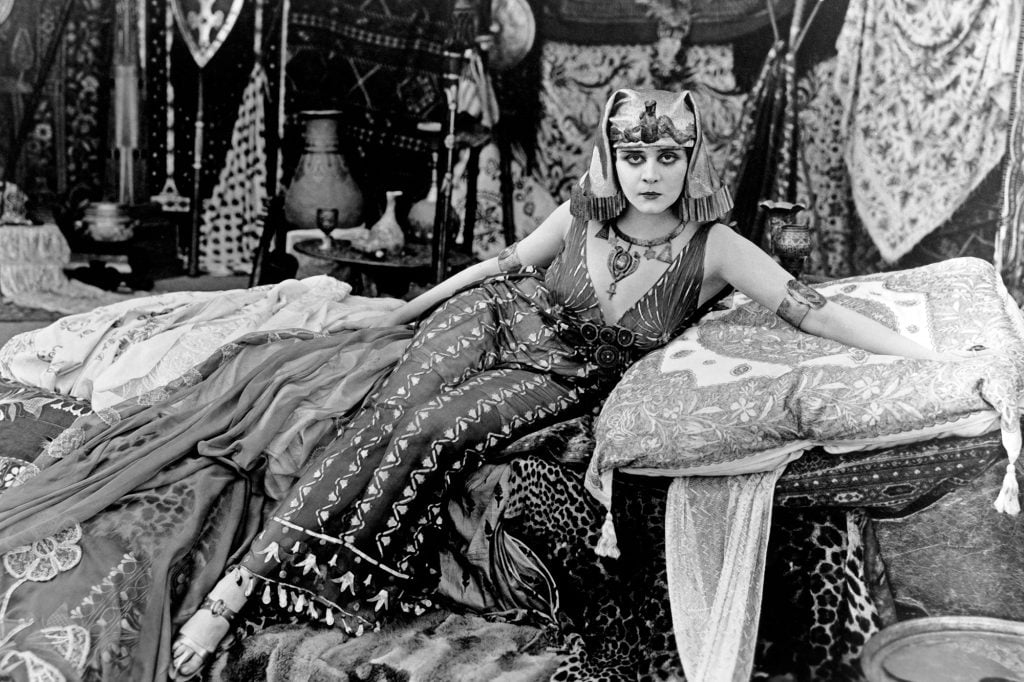
Theda Bara in a publicity still for Cleopatra, 1917. Photo: United Archives via Getty Images
Bara, who was born Theodosia Goodman in Cincinnati in 1885, ultimately starred in 42 films including The Devil’s Daughter, Sin and The Vixen. At the height of her popularity, she was an internationally recognized sex symbol who appeared on the covers of magazines and even wrote her own newspaper column.
Her death from stomach cancer in Los Angeles in 1955 at the age of 69 appeared on the front pages of newspapers. But many of the films she starred in have since been lost due to the deterioration of nitrate film stock.
The Lincoln Memorial’s new undercroft visitor center, scheduled to be completed by July 2026, will not include the area where the graffiti is. But it will include a museum, an immersive theater, a store and an exhibit section with glass walls letting visitors look out into the undercroft.
The Hunt explores art and ancient relics that are—alas!—lost to time. From the Ark of the Covenant to Cleopatra’s tomb, these legendary treasures have long captured the imaginations of historians and archaeologists, even if they remain buried under layers of sand, stone, and history.
This post was originally published on this site be sure to check out more of their content.


